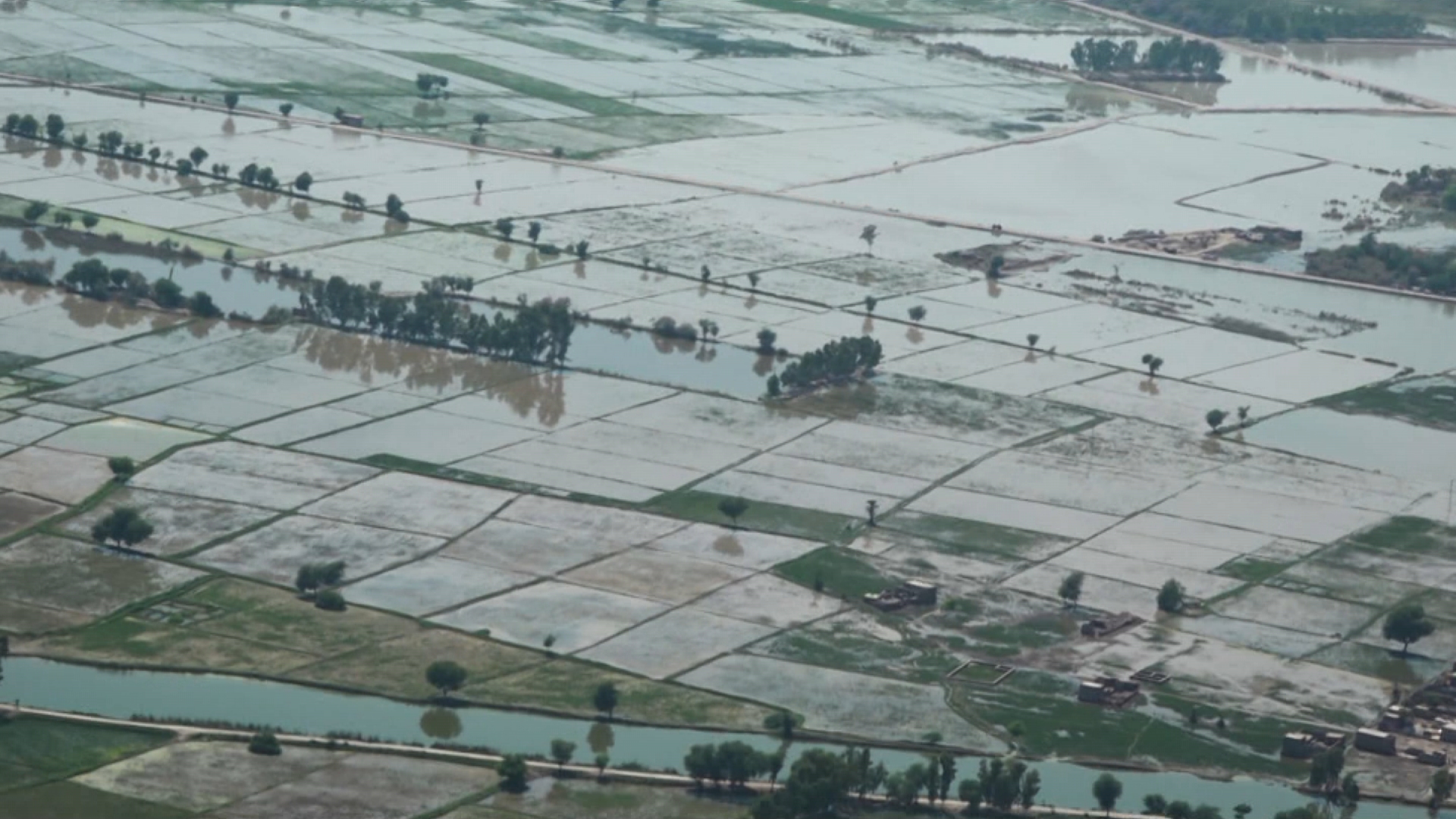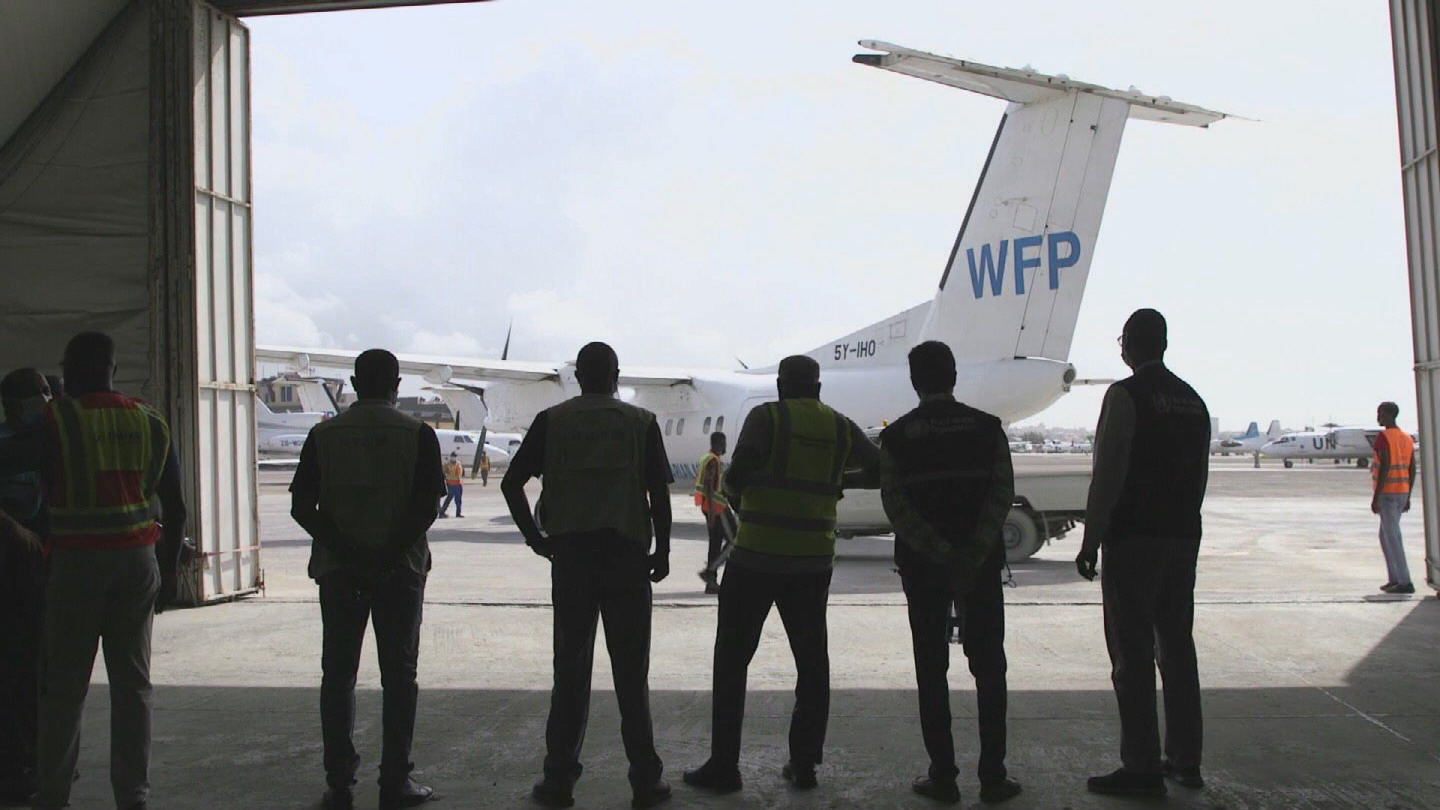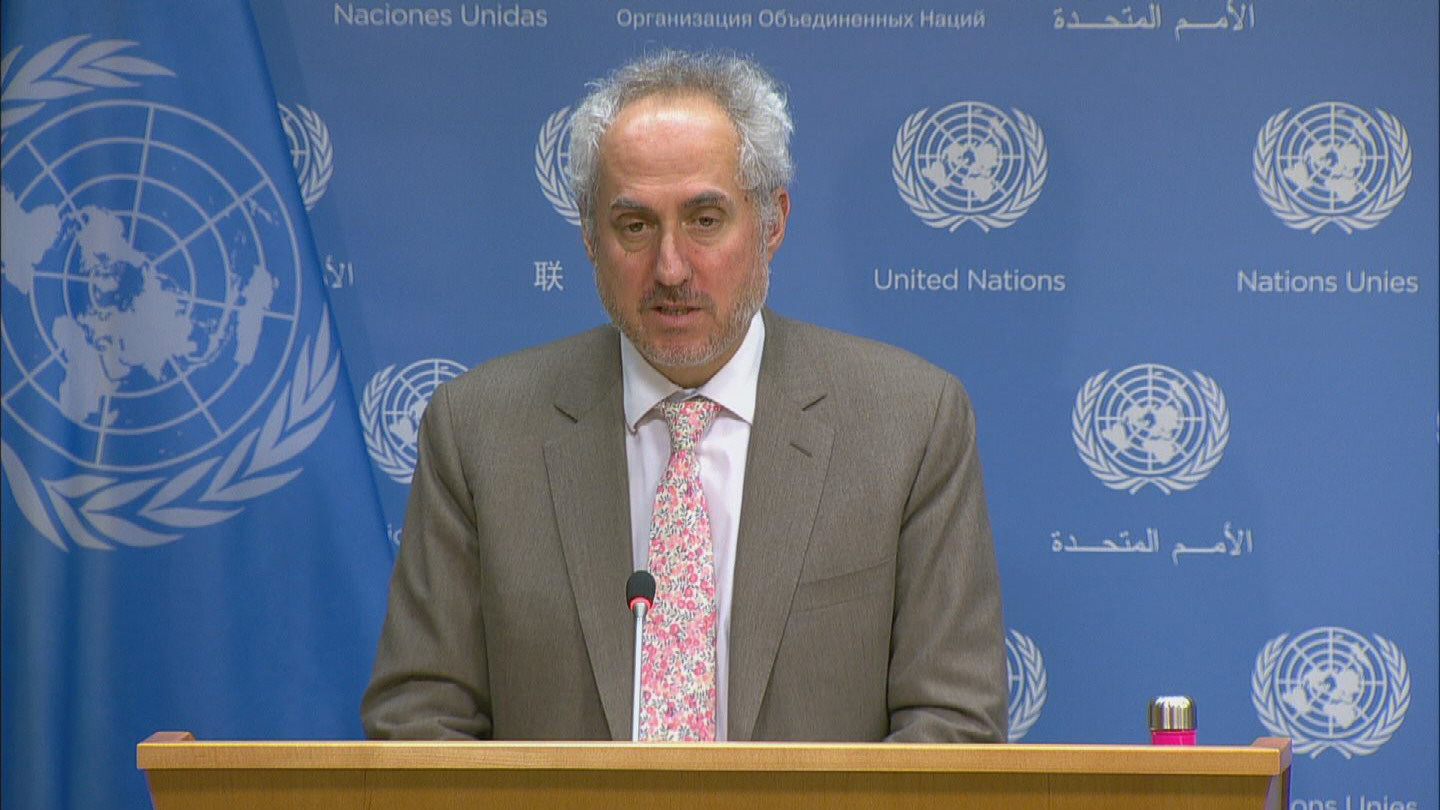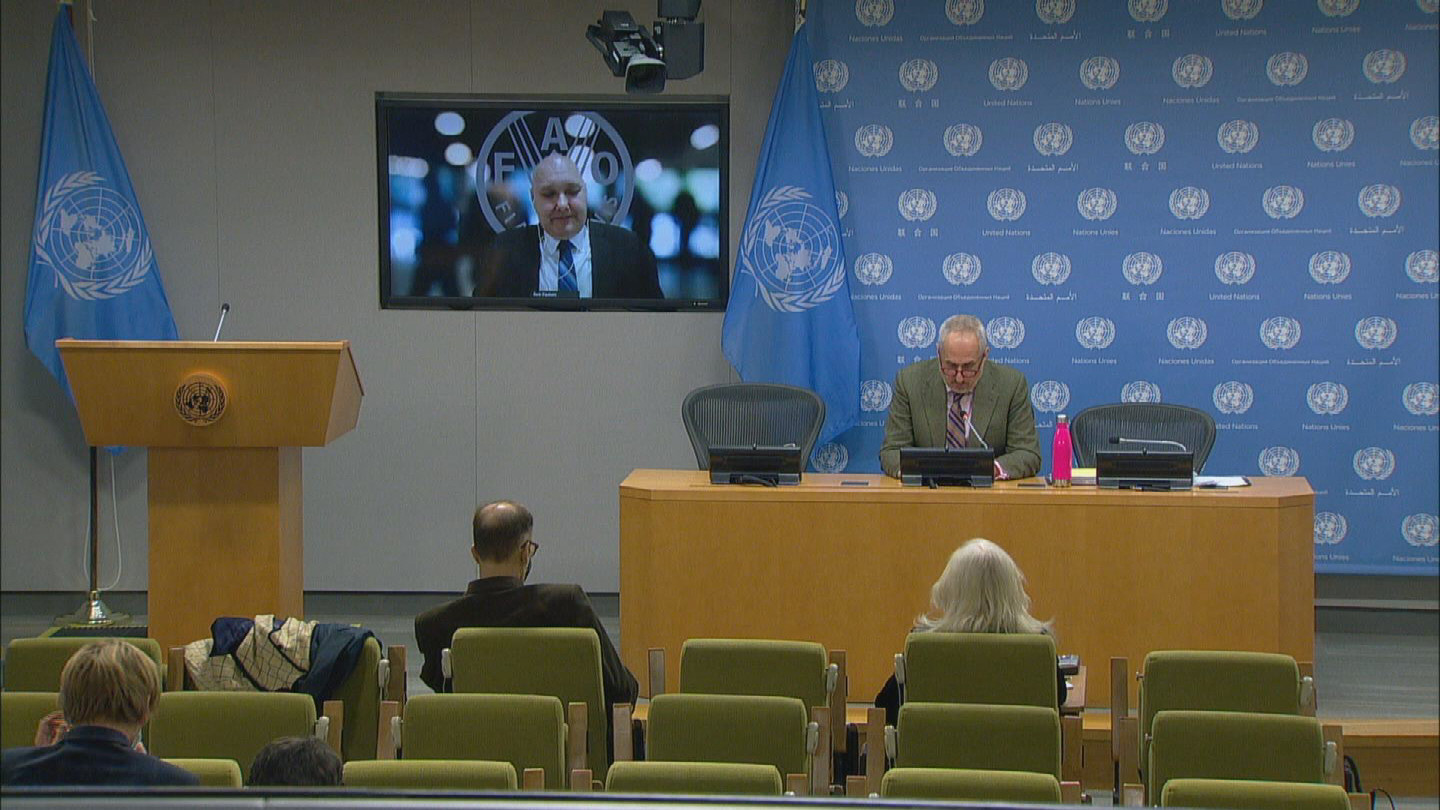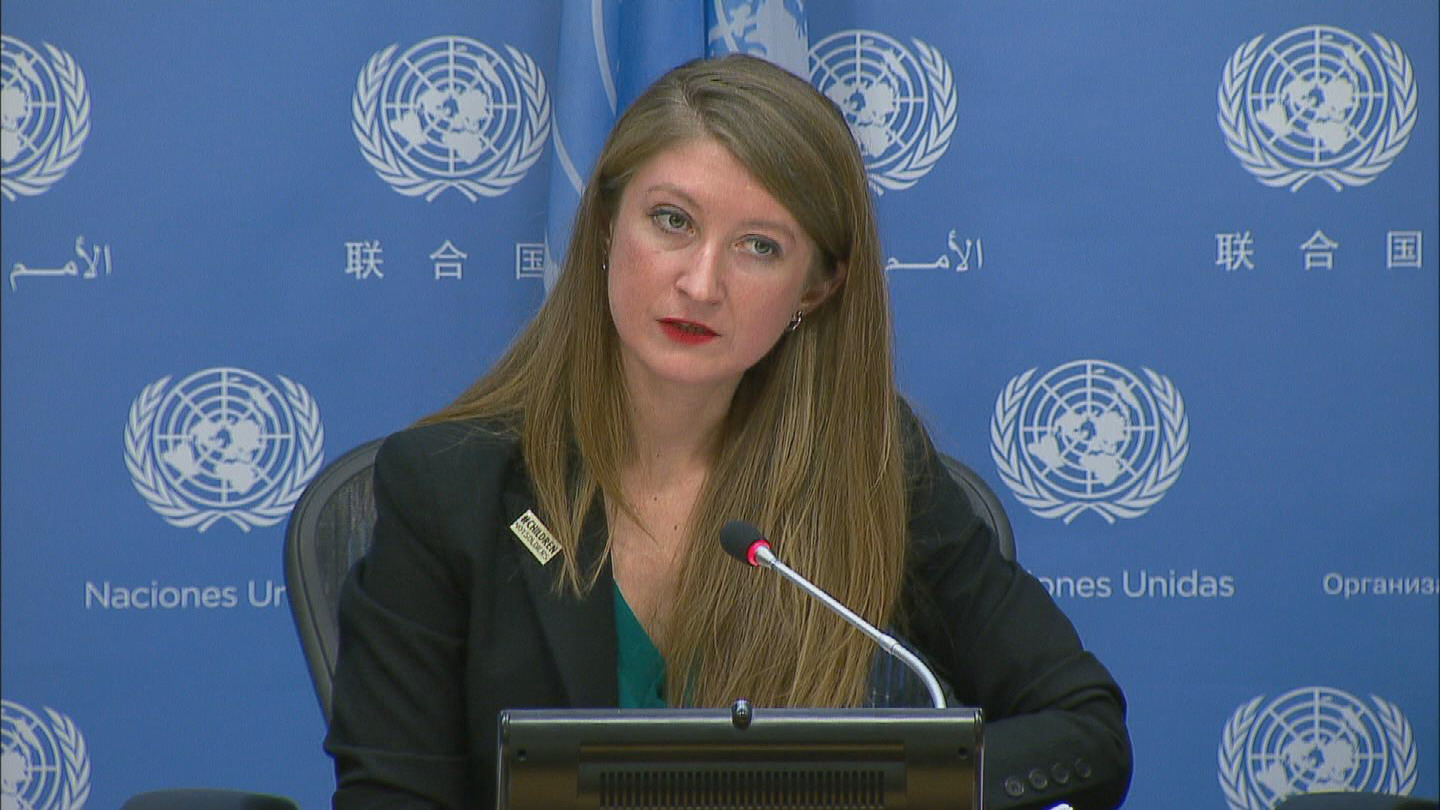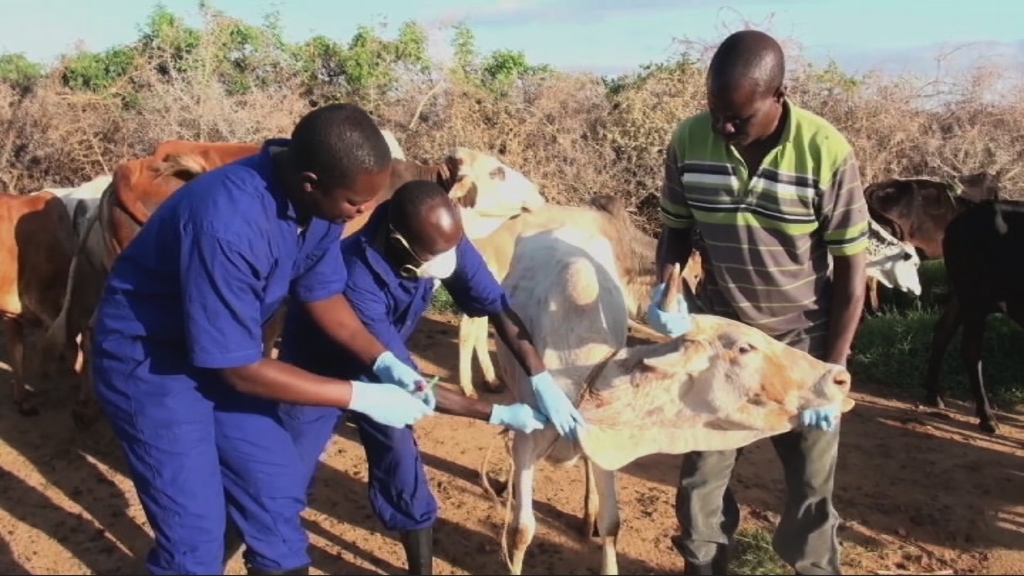FAO / GLOBAL REPORT FOOD CRISES
STORY: FAO / GLOBAL REPORT FOOD CRISES
TRT: 4:39
SOURCE: FAO
RESTRICTIONS: PLEASE CREDIT FAO ON SCREEN
LANGUAGE: ENGLISH / NATS
DATELINE: ROME, ITALY, 22 APRIL 2024 / RECENT
4-8 APRIL 2024, GAZA STRIP
1. Wide shot, livestock keepers feeding sheep
2. Close up, sheep eating
3-4 NOVEMBER 2021, KANDAHAR AREA, AFGHANISTAN
3. Wide shot, farmers working their land with shovels
19 MAY 2021, NANGARHAR PROVINCE, AFGHANISTAN
4. Close up, a wheat farmer harvesting
JULY 2017, KASAI PROVINCE, DEMOCRATIC REPUBLIC OF THE CONGO
5. Wide shot, farmers at work, watering plants
9 - 10 NOVEMBER 2020, AZAZA VILLAGE, SUDAN
6. Med shot, women tilling the soil
8 FEBRUARY 2022, MARSABIT, KENYA
7. Wide shot, woman standing by skinny cows
2021, MAURITANIA
8. Close-up, man tapping dry ground
FILE – ROME, ITALY
9. Wide shot, FAO Headquarters
22 APRIL 2024, ROME, ITALY
10. SOUNDBITE (English) Rein Paulsen, Director of the Office of Emergencies and Resilience, FAO:
“Even more than the absolute numbers, I think one of the most important findings is that the prevalence, so the percentage of the assessed population in acute food insecurity, remained stubbornly high in 2023.”
4-8 APRIL 2024, GAZA STRIP
11. Wide shot, farmers queueing for animal fodder
12. Med shot, FAO staff talking with farmer inside warehouse
13. Close up, animal fodder being poured into a bag
14. Med shot, FAO staff helping a farmer carry a fodder bag
1 SEPTEMBER 2020 GAIBANDHA DISTRICT, BANGLADESH
15. Wide shot, FAO staff talking with a farmer
18 JULY 2017, AL GHEZLANEYE, SYRIA
16. Med shot, farmer feeding a sheep after parasite control
8 NOVEMBER 2021, DAMAN DISTRICT, KANDAHAR PROVINCE, AFGHANISTAN
17. Wide shot, aid workers in a warehouse preparing wheat seeds bags for distribution
22 APRIL 2024, ROME, ITALY
18. SOUNDBITE (English) Rein Paulsen, Director of the Office of Emergencies and Resilience, FAO:
“More than 80 percent of people in need of humanitarian assistance, living in situations of acute food insecurity, are connected to agriculture, live in rural areas, and yet only 4 percent of the funding that goes to food security activities, in food crisis context, only 4 percent goes to agriculture. So that's telling us we need to have some fairly significant shifts and changes there.”
17 DECEMBER 2022, SALAXLEY, SOMALIA
19. Aerial shot, dry land
1-5 OCTOBER 2023, KAPOETA SOUTH COUNTY, SOUTH SUDAN
20. Med shot, pastoralist gathering his livestock
21. Close up, hand pouring flour into boiling water
22. Med shot, woman preparing a meal
19-25 March 2018, BANGLADESH
23. Tilt up, Kutupalong refugee camp
24. Wide shot, Rohingya kids in the camp
25. Med shot, Rohingya woman inside camp
22 APRIL 2024, ROME, ITALY
26. SOUNDBITE (English) Rein Paulsen, Director of the Office of Emergencies and Resilience, FAO:
“The single most significant driver of acute food insecurity is conflict and violence. This was the primary driver in 20 of the 59 countries [studied in the report], and represented in absolute terms, the key driver for the largest number of people in acute food insecurity. The second driver then relates to extreme weather events. We've had the hottest year on record, the El Nino phenomenon, just to name one of the factors, has been a key driver behind it, so climatic events was the second most significant driver. And economic shocks was the third most important driver. And again here, I think it's important not to view these three drivers in isolation. What we see is that often, typically, these three have been mutually reinforcing and together exacerbated the acute food insecurity situation.”
17 APRIL 2024, SHATA VILLAGE, SUDAN
27. Wide shot, Paulsen walking with villagers
28. Wide shot, Paulsen with villagers
29. Med shot, Paulsen listening
30. Wide shot, Paulson watching a man operating a well
22 APRIL 2024, ROME, ITALY
31. SOUNDBITE (English) Rein Paulsen, Director of the Office of Emergencies and Resilience, FAO:
“We've seen a significant deterioration in the last 12 months, and it's in the last 12 months because it's 12 months ago this month that fighting started in the country, again showing this direct relationship between conflict and acute food insecurity. But the other thing that we've seen in Sudan is the impact of the climate crisis and climate change. Some of the communities I visited in Red Sea State, for example, showed me basic agricultural infrastructure that had been washed away the last time that there were significant rains, earth dams that were required to keep water in place to allow for hand irrigation of fields, for example, had been broken through because the rains came much more quickly and with larger amounts than they were anticipating. And so again, we see this overlap geographically between conflicts, between climate crisis, and indeed economic shocks as well.”
NOVEMBER 2017, INDIA
32. Wide shot, lunch being served at Thane Municipal Corporation School
33. Track shot, student holding a food dish
34. Tilt up, young student eating
OCTOBER 2022, SRI LANKA
35. Drone shot, farmers preparing soil
36. Close up, farmer working on land
37. Close up, farmer removing soil
Over 282 million people in 59 countries and territories suffered acute food insecurity in 2023, according to the 2024 Global Report on Food Crisis. These numbers represent a 24 million increase in comparison to the previous year.
Conflict, extreme weather events, and economic shocks are the main drivers behind acute hunger worldwide, reveals the report, authored by the Global Network Against Food Crises (GNAFC), an alliance of humanitarian and development actors launched by the Food and Agriculture Organization of the United Nations (FAO) with other partners in 2016.
The increase in the number of people facing acute food insecurity is explained by greater analysis coverage and the deteriorating acute food insecurity in some countries and territories, such as conflict hotspots like Gaza and the Sudan.
The five countries with the largest number of people facing high levels of acute food insecurity are Democratic Republic of the Congo, Nigeria, the Sudan, Afghanistan, and Ethiopia, while Palestine, South Sudan, Yemen, the Syrian Arab Republic, and Haiti have the largest share of analysed population facing high levels of hunger, according to the report.
The Director of the FAO Office of Emergencies and Resilience, Rein Paulsen, said that one of the report’s takeaways is that the percentage of the population that faced hunger crisis in 2023 (21.5 percent of the analysed population) continues to be persistently high over the years.
“Even more than the absolute numbers, I think one of the most important findings is that the prevalence, so the percentage of the assessed population in acute food insecurity, remained stubbornly high in 2023,” said Paulsen.
Initially launched in 2016, the 2024 Global Report on Food Crisis shows that food crises are severe and protracted, with 36 countries facing hunger crises for eight consecutive years.
The Global Network urged to shift towards a more integrated approach for prevention, anticipation, and preparedness to break this vicious cycle, while Paulsen called for a “significant change” in the strategies aimed at tackling food crisis.
“More than 80 percent of people in need of humanitarian assistance, living in situations of acute food insecurity, are connected to agriculture, live in rural areas, and yet only 4 percent of the funding that goes to food security activities, in food crisis context, only 4 percent goes to agriculture. So that's telling us we need to have some fairly significant shifts and changes there,” explained Paulsen.
The report identifies conflicts, extreme weather events, and economic shocks as the three main drivers behind the exacerbation of food crises in the world.
Paulsen explained that these drivers often operate interlinked and superimposed on structural vulnerabilities, making it harder for households to cope with and recover from shocks.
“The single most significant driver of acute food insecurity is conflict and violence. This was the primary driver in 20 of the 59 countries [studied in the report], and represented in absolute terms, the key driver for the largest number of people in acute food insecurity. The second driver then relates to extreme weather events. We've had the hottest year on record, the El Niño phenomenon, just to name one of the factors, has been a key driver behind it, so climatic events was the second most significant driver. And economic shocks was the third most important driver. And again here, I think it's important not to view these three drivers in isolation. What we see is that often, typically, these three have been mutually reinforcing and together exacerbated the acute food insecurity situation,” explained Director of the FAO Office of Emergencies and Resilience.
Paulsen specifically commented on the situation in the Sudan, which represents one of the worst hunger crises in the world, with 18 million people facing acute food insecurity.
Commenting on the findings of a recent trip he made to the country, Paulsen said he witnessed how the overlapping effects of the ongoing civil war and the climate crisis have profoundly deteriorated food insecurity.
“We've seen a significant deterioration in the last 12 months, and it's in the last 12 months because it's 12 months ago this month that fighting started in the country, again showing this direct relationship between conflict and acute food insecurity. But the other thing that we've seen in Sudan is the impact of the climate crisis and climate change. Some of the communities I visited in Red Sea State, for example, showed me basic agricultural infrastructure that had been washed away the last time that there were significant rains, earth dams that were required to keep water in place to allow for hand irrigation of fields, for example, had been broken through because the rains came much more quickly and with larger amounts than they were anticipating. And so again, we see this overlap geographically between conflicts, between climate crisis and indeed economic shocks as well.”
The Global Network promotes the need for more complementary humanitarian and development responses to food and nutrition crises that also contribute to peace as a critical approach to tackling the multidimensional drivers. The partners stressed that peace is a prerequisite of food security.
